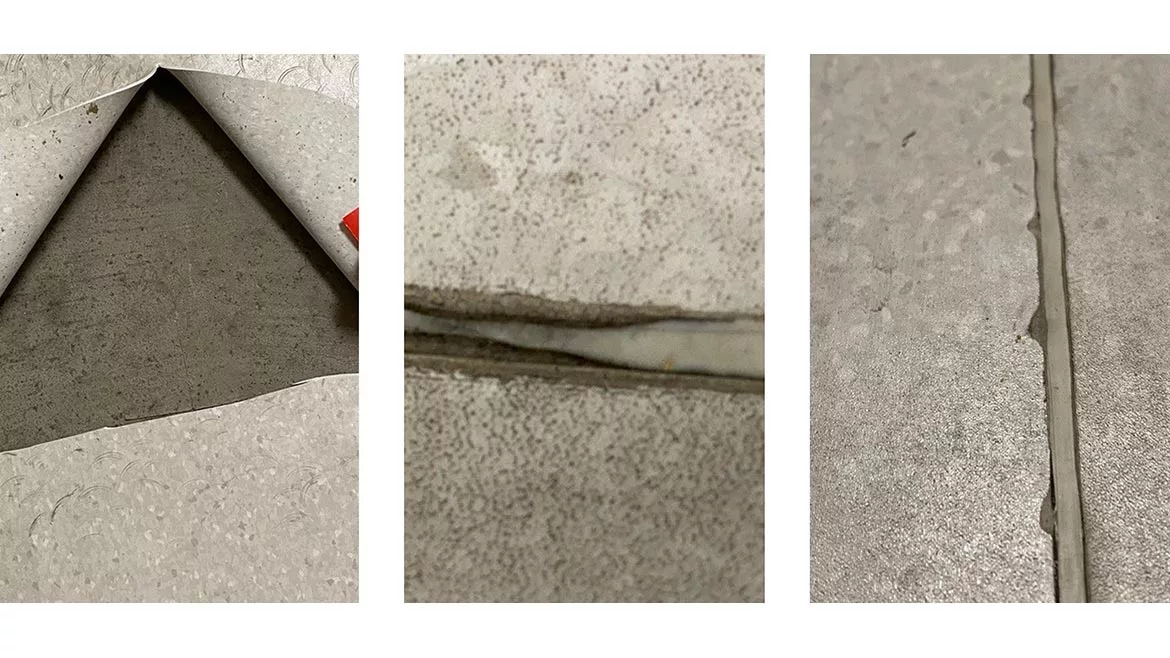Case Study: Flooring Inspector Bob Blochinger Investigates a Medical Facility Resilient Flooring Failure

All hot-weld seams shrank and lifted, opening the space to soiling and health issues concerning sanitization and cleanliness.
Photos: IICRC and Bob Blochinger.
A medical office suite with an area for procedures has resilient sheet goods installed over concrete slab, on grade. The office section has a vinyl plank installed via adhesive with no issues. The procedure section has sheet goods with welded seams. This is an outpatient operation with multiple rooms and open space with beds connected by wide corridors.
Within a few months, the sheet goods developed bubbles in various locations: rooms, open spaces and corridors. Ambient conditions were within a normal service range for this type of space.
What is the causation of the bubbles? Maintenance procedure, adhesive failure, product specification, product construction, moisture emission from concrete, furnishing movement, foot traffic or installation workmanship? Any one of these mentioned or all of the above?
Site review and field inspection of the project consisted of visual and physical examination, impedance meter use, ASTM 2170 testing, pH testing, hand touch, destructive testing, review of furnishing movement and equipment, maintenance equipment, chemicals used and interview with general contractor and owner.
Destructive testing was approved. We cut open a section with the biggest bubble to visually review the condition of the adhesive, resilient product back, adhesive to concrete and product back, and to place moisture meter and perform an overall examination to see what’s going on.
The ASTM 2170 was performed nearby as was the pH test and readings of the ambient conditions.
During the interview with the general contractor, who had hired a flooring contractor to perform the work, it was discovered some installation processes were not followed: adequate adhesive spread rate, adequate volume of adhesive used, no roller of product after installation. The opening of the flooring confirmed these comments.
Furnishings such as chairs, did not have wheels for ease of movement. The equipment did have wheels, however, the pivotal movement and PSI at the point of wheel contact and concentration of pressure did allow the flooring to release from the concrete.
All hot-weld seams shrank and lifted, opening the space to soiling and health issues concerning sanitization and cleanliness.
After a discussion on maintenance, this topic was not a consideration for the inspection.
Conclusion: inferior workmanship and installation procedure; lack of correct moisture testing of the concrete; inadequate volume of adhesive to ensure a correct bond between the sheet goods and concrete; lack of product compression into adhesive due to not using the correct roller; incorrect procedures for hot weld seams; and cutting the vinyl within taking the surface layer off.
This article published courtesy of the IICRC Inspection Division and Bob Blochinger.
Looking for a reprint of this article?
From high-res PDFs to custom plaques, order your copy today!




